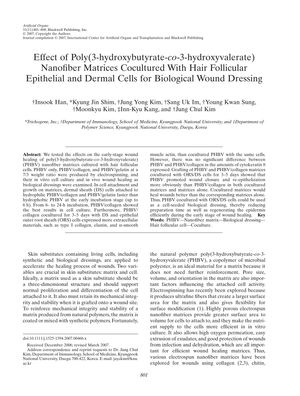Effect of Poly(3-Hydroxybutyrate-Co-3-Hydroxyvalerate) Nanofiber Matrices Cocultured With Hair Follicular Epithelial and Dermal Cells for Biological Wound Dressing
August 2007
in “
Artificial Organs
”

TLDR PHBV nanofiber matrices help wounds heal faster when used with hair follicle cells.
In a 2007 study, researchers explored the potential of poly(3-hydroxybutyrate-co-3-hydroxyvalerate) (PHBV) nanofiber matrices as biological wound dressings when cocultured with hair follicular cells. They discovered that while PHBV matrices enhanced with collagen or gelatin improved cell attachment and extracellular matrix production, the PHBV matrices without additives were more effective in promoting wound closure and re-epithelization in vivo. The study concluded that the mechanical properties of PHBV matrices are crucial for early-stage wound healing, and that these cell-seeded matrices could be rapidly produced and serve as efficient biological dressings, leveraging the advantages of hair follicular cells' stem cell properties and low immunogenicity.